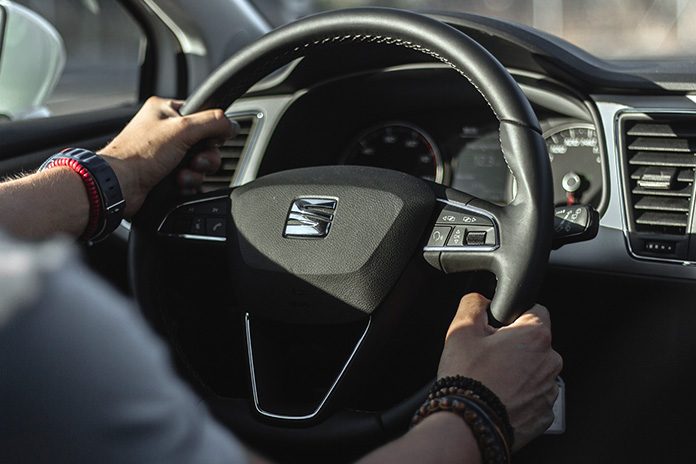
If you’ve driven a newer car, chances are it has an infotainment system with a touch screen and voice commands.
These infotainment systems take drivers’ eyes and attention off the road and hands off the wheel for potentially dangerous periods of time, according to new research from the AAA Foundation for Traffic Safety. Drivers using in-vehicle technologies such as voice-based and touch screen features were visually and mentally distracted for more than 40 seconds when completing tasks like programming navigation or sending a text message.
AAA has conducted this new research to help automakers and system designers improve the functionality of new infotainment systems and the demand they place on drivers. With nearly 40 percent of U.S. drivers using infotainment systems while driving, AAA cautions that using these technologies while behind the wheel can have dangerous consequences. Removing eyes from the road for just two seconds doubles the risk for a crash, according to previous research.
“Some in-vehicle technology can create unsafe situations for drivers on the road by increasing the time they spend with their eyes and attention off the road and hands off the wheel,” said Dr. David Yang, executive director of the AAA Foundation for Traffic Safety. “When an in-vehicle technology is not properly designed, simple tasks for drivers can become complicated and require more effort from drivers to complete.”
“Touch screens and voice-based technologies are common in newer vehicles, and most drivers assume that these technologies are safe to use while driving since they are hands-free. But our latest AAA research shows that’s definitely not the case,” says Marie Dodds, public affairs director for AAA Oregon/Idaho.
The AAA Foundation for Traffic Safety commissioned researchers from the University of Utah to examine the visual (eyes off road) and cognitive (mental) demand as well as the time it took drivers to complete a task using the infotainment systems in 30 new 2017 vehicles. Study participants were required to use voice commands, touch screen and other interactive technologies to make a call, send a text message, tune the radio or program navigation, all while driving down the road.
Programming navigation was the most distracting task, taking an average of 40 seconds for drivers to complete. When driving at 25 mph, a driver can travel the length of four football fields during the time it could take to enter a destination in navigation—all while distracted from the important task of driving. Programming navigation while driving was available in 12 of the 30 vehicle systems tested.
None of the 30 vehicle infotainment systems produced low demand, while 23 systems generated high or very high levels of demand on drivers:
- 12 systems generated very high demand
- 11 systems generated high demand
- 7 systems generated moderate demand

“Drivers want technology that is safe and easy to use, but many of the features added to infotainment systems today have resulted in overly complex and sometimes frustrating user experiences for drivers,” said Marshall Doney, AAA’s president and CEO. “AAA has met with interested auto manufacturers and suppliers to discuss our findings. We welcome the opportunity to meet with other interested parties to discuss the report’s recommendations and ways to mitigate driver distraction.”
According to a new AAA public opinion survey, nearly 70 percent of U.S. adults say that they want the new technology in their vehicle, but only 24 percent feel that the technology already works perfectly. Frustration resulting from unsatisfactory use of these systems increases cognitive demand and increases the potential for distracted driving.
“The good news is our AAA research shows that these problems can be fixed. Automakers can significantly reduce driver distraction just by following NHTSA’s voluntary guidelines that say drivers shouldn’t be able to access certain feature when the vehicle is in motion,” adds Dodds. “And drivers should minimize distractions by programming navigation before hitting the road, and avoiding sending text messages or checking social media while driving. Just because technologies come installed in a vehicle doesn’t mean they’re safe to use while driving.”









